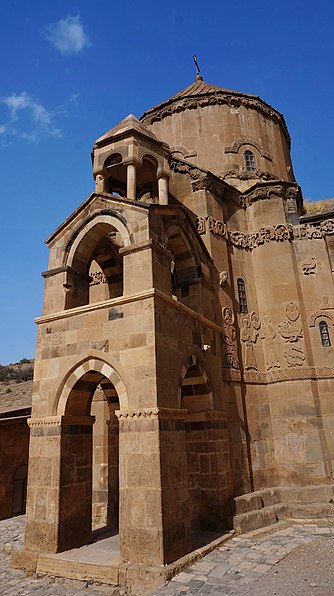Cathedral of the Holy Cross, Akdamar Island

Facts and practical information
Nestled on the picturesque Akdamar Island in Lake Van, Turkey, the Cathedral of the Holy Cross stands as a testament to the region's rich history and cultural tapestry. This ancient Armenian cathedral, also known as the Akdamar Church or the Church of the Holy Cross, is a marvel of medieval architecture and a significant landmark for both the Armenian heritage and the broader spectrum of historical monuments in Turkey.
Constructed between 915 and 921 AD under the patronage of King Gagik I of Vaspurakan, the cathedral is renowned for its distinctive stone masonry and the exquisite stone reliefs that adorn its external walls. These intricate carvings depict a variety of biblical scenes and motifs, offering a unique insight into the artistry of the period.
The cathedral, though no longer used for regular worship, remains a site of pilgrimage and cultural importance. It was restored by the Turkish government between 2005 and 2007, reflecting efforts to preserve and respect the diverse historical narratives found within the country.
Visitors to the Cathedral of the Holy Cross can explore the compact island by taking a short boat ride from the mainland. Once there, they are free to wander around the church's exterior to admire the detailed carvings and enjoy the serene beauty of Lake Van. The interior of the cathedral, with its modest yet evocative remnants of frescoes and carvings, provides a contemplative space that echoes the spiritual significance it has held for centuries.
While on the island, tourists should also take the opportunity to absorb the panoramic views of the surrounding lake and mountains, which add to the tranquil atmosphere of this sacred site. The Cathedral of the Holy Cross is not just a destination for history buffs or those interested in religious architecture; it is a peaceful retreat that offers a glimpse into a bygone era and the chance to reflect amidst the natural beauty of eastern Turkey.







